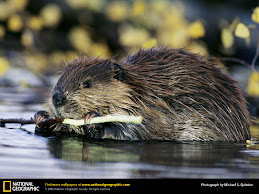
We know the worth of water, said Ben Franklin in Poor Richard’s Almanac, when the well runs dry.
He’s right, and in a hot summer like this, lots of wells run dry.
As I discussed today on WHYY’s “Morning Edition,” many analysts—and not the obvious ones—are predicting that water will become, as The Guardian wrote in a May story, “the next scourge to afflict the global economy after soaring oil and food prices.”
General Electric—no Greenpeace this group—is preemptively cutting its own use of water by 20% by 2012, and will look to export water-saving technologies to water-starved countries. Here’s more evidence of the emerging green-collar economy that has received only modest attention in the presidential election—GE wants to lead in water conservation.
Cool.
A vice president of GE says “there is going to be a price on water that is going to reflect its scarcity in a way that it doesn’t today. We’re going to see that change over time—certainly in emerging markets.”
DuPont has joined the water bandwagon, dedicated to reducing its water use by one-third in the next 7 years, and Coca-Cola has already reduced its consumption 20% since 2003. Of course, greening large corporations isn't easy, and Coke continues to take heat for not living up to its hype. Still, industry is light years ahead of the government on at least this issue.
As global warming radically alters climate in the coming decades, one UN office predicts that half of the world’s arable land might no longer be suitable for food production by 2050.
Today, numerous rivers—Colorado, Rio Grande, Nile—are exhausted by the time they reach the sea. In fact, they no longer run to the sea.
Our use of water is unsustainable, and this issue will soon take its place alongside global warming as the Scylla and Charybdis the world has to pass between to navigate this, the environmental century.
Ands look who’s leading the way: Coke, DuPont, GE.
Jump on board the bandwagon, before your well runs dry. One way to begin wading into the issue is to calculate your own use of water-- your water footprint. Check out ways to do this, and, like everyone is installing compact flourescent light bulbs to combat global warming, consider ways you can begin participating in the global push for water conservation.


